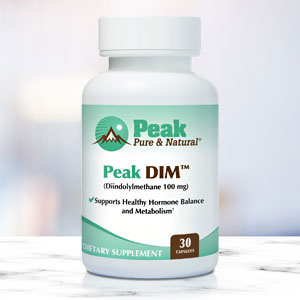Get Easy Health Digest™ in your inbox and don’t miss a thing when you subscribe today. Plus, get the free bonus report, Mother Nature’s Tips, Tricks and Remedies for Cholesterol, Blood Pressure & Blood Sugar as my way of saying welcome to the community!
How toxins in your home could give your family diabetes

Did you know commonly known endocrine-disrupting chemicals (EDCs) pose a severe public health threat — and your exposure begins right in your very own home?
The Endocrine Society has spent over 14 years researching exposure to these environmental toxins that are present in our air, water, soil, cleaning products, children’s toys, cooking utensils, beauty products and furniture. They interfere, imitate, or alter pathways of hormones in the body and are connected to growing health problems including heart disease, asthma and infertility, as well as breast and prostate cancer.
One commonly known EDC is bisphenol A (BPA), which is often found in cash register receipts and certain plastics that you use every day. Look at the bottom of a plastic container in your cupboard, and you may see BPA or BPA-free. A BPA-free product, for example, doesn’t use the organic compound Bisphenol A in its construction.
Related: 10 ways to reduce exposure to BPA that’s 10x higher than you think
You may feel a sigh of relief, thinking you are off the hook. However, new research adds to the growing evidence that BPA replacements are not as safe as you think. The studies show that common BPA replacements such as BPS, BPF, BPAF, and diphenyl sulphone can decrease sperm counts in males and reduce egg quality in females, which can be passed down to subsequent generations.
And it’s not the only toxin that’s being passed down. One, in particular, may be contributing to rising cases of diabetes…
Are chemicals the reason diabetes is on the rise?
Polybrominated diphenyl ethers (PBDE)s are chemicals used as fire retardants in household products, like upholstery. And even though the most harmful PBDEs have been banned in the U.S., these chemicals leach into our water, soil and air because of inadequate recycling of products that contain them.
PBDEs have been associated with diabetes in adult humans. And just as some of the dangerous effects of BPAs and their replacements can be passed on, researchers wondered if diabetes could also be passed to children from mothers exposed to PBDEs.
To find out, the researchers looked to mice.
Researchers at UC Riverside gave PBDEs to mouse mothers at low levels that were comparable to average human environmental exposure both during pregnancy and lactation.
All of the baby mice developed specific hallmarks of diabetes, including glucose intolerance, high fasting glucose levels, and insulin insensitivity. The babies also had high levels of endocannabinoids in the liver, which are molecules associated with appetite, metabolism and obesity.
Surprisingly, though the mothers developed some glucose intolerance, they weren’t as affected as their offspring.
According to UCR neuroscientist and corresponding author of the study, Dr. Margarita Curras-Collazo, “Our findings indicate that chemicals in the environment, like PBDEs, can be transferred from mother to offspring, and exposure to them during the early developmental period is damaging to health.”
How to avoid PBDEs
Dr. Curras-Collazo says that PBDEs are everywhere in our homes and practically impossible to completely avoid. But she suggests that people take steps to limit PBDE exposure by washing hands before eating, vacuuming frequently, and buying furniture and other products that do not contain it.
The Environmental Working Group (EWG) is a great source to find information about how to shop for products without these chemicals. You can get started with this link on finding couches without toxic fire retardants.
Here are some additional ways to help reduce your daily exposure to endocrine-disrupting chemicals:
- Click here for their EDC dirty dozen, where to find them and how to avoid them.
- Proper recycling can limit the amount of these potential EDCs in the environment.
- On plastic bottles, a #1, #2, or #4 in the recycling sign means the product is free of BPA.
- Avoid numbers #3, #6, and #7 which all contain compounds of great concern.
- Eating more broccoli sprouts, which helps the body excrete pollutants like benzene.
- Watch out for leaching. Avoid using the microwave or heating food in plastic containers due to the leaching of chemicals into your food.
- Read labels for cleaning supplies, facial washes and detergents. Use chemical-free cleaning solutions if possible, like these 10 essential oils for a clean toxin-free home.
- Invest in a water filtration system instead of drinking bottled water.
Editor’s note: Did you know that when you take your body from acid to alkaline you can boost your energy, lose weight, soothe digestion, avoid illness and achieve wellness? Click here to discover The Alkaline Secret to Ultimate Vitality and revive your life today!
Sources:
Why BPA Free may not mean a plastic product is safe — National Geographic.com
What you can do about EDCs — Endocrine Society
Chemicals in your living room cause diabetes — Eurekalert!
Common Chemicals may cause obesity and diabetes — Diabetes In Control.com













